The walkability of our built environment is a subject that significantly impacts our daily lives and overall well-being. Having had the opportunity to live in both North America and Europe and travel extensively within these regions, I've observed striking differences in the walkability of cities and towns. While this topic is hardly a new one, I just wanted to share my experiences to add to the conversation.
Let's explore these differences and the challenges they present.
North America: A Tale of Varying Experiences
In North America, the walkability of an urban area greatly depends on where you are. Major cities with vibrant downtown areas or scenic wilderness regions can often offer enjoyable walking experiences. However, the issue often lies in the vast distances and urban sprawl that can make walking feel like an arduous journey.
Take, for example, my time in Calgary, Alberta. Commuting downtown from one of their suburban stations (Southland) by light rapid transit (LRT), I found myself walking for about 15 minutes between home and the station. During this commute, I primarily walked next to a relatively quiet collector road. However, the road's excessive width encouraged speeding, making me feel unsafe despite the sparse traffic.
Now, we live in London, a medium-sized city in Ontario. When we first moved there we lived in the downtown area. It was a pleasant experience, offering easy access to restaurants and amenities, but there was a notable absence of walkable grocery stores and other fundamental amenities. The situation improved somewhat when we moved to an inner-city suburb, where a ten-minute walk led us to a nearby village with a grocery store, although other fundamental amenities remained limited.
In my current suburban neighbourhood, there's a lack of amenities within walking distance, except for a chain coffee shop. While the nearby forest provides multimodal trails and a serene backdrop for walking, the streets are predominantly lined with single detached houses, making it repetitively boring and a less-than-ideal walking experience, especially with children.
Europe: A Compact Experience
In contrast, Europe offers a vastly different walking experience compiling centuries (if not millennia, in some cases) of built environment. The compact design of European cities and towns demonstrates that walking from point A to point B is not just a means of transportation; it's an opportunity to explore and experience the surroundings, making the overall experience more enjoyable.
During our current sabbatical year with my family, we've had the privilege of travelling through Europe, visiting Portugal, Spain, and the United Kingdom (UK) so far. In Portugal, we found ourselves in a rural village about an hour's walk from the nearest urban center, Marco de Canaveses. While walking through rural areas presented mixed challenges, the village itself was remarkably walkable. However, sharing the road with vehicles, the lack of proper pedestrian facilities, and limited traffic control posed safety risks.
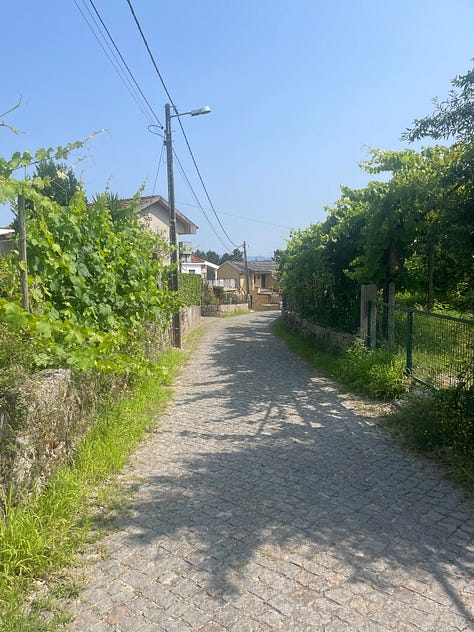
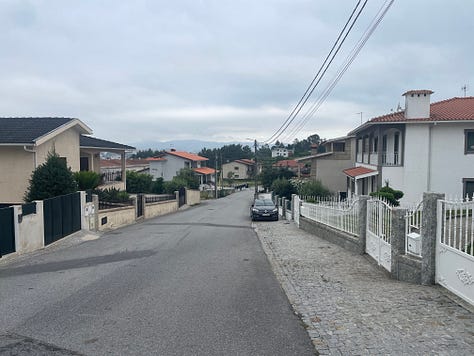
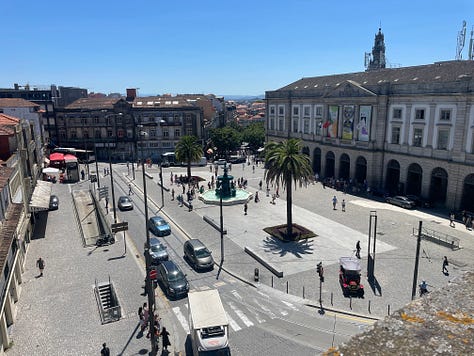
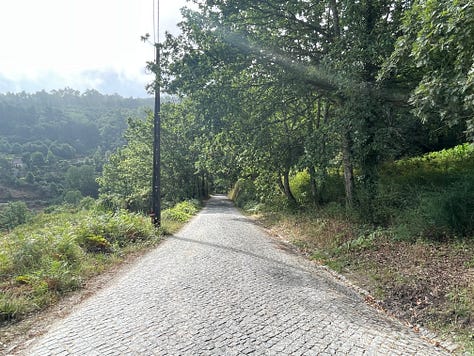
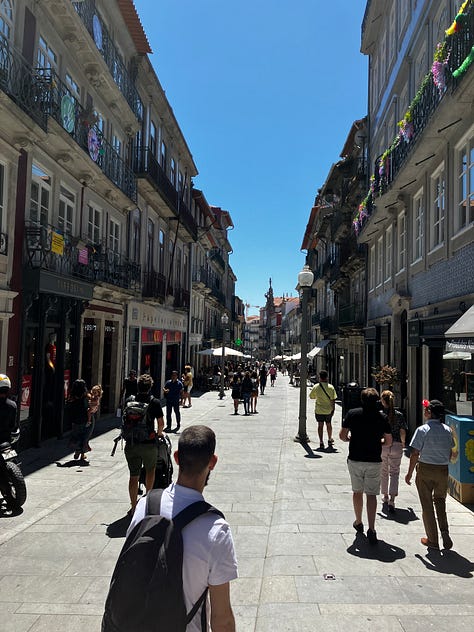
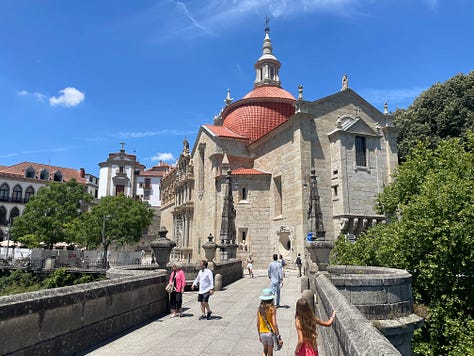
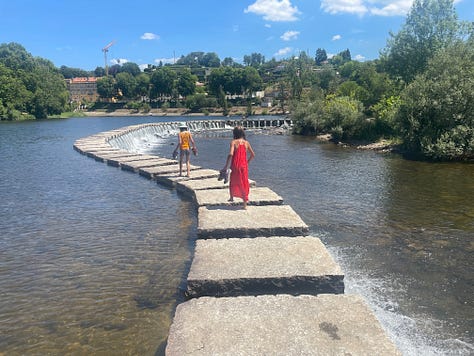
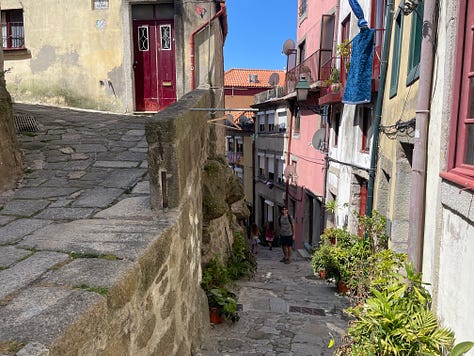
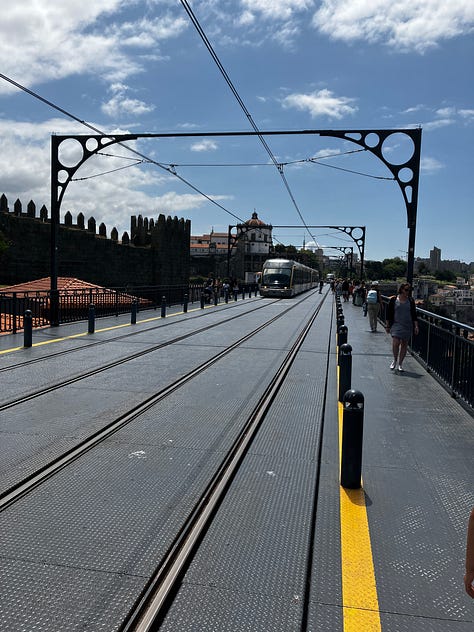
Life in rural Oria, Spain provided a similar experience to Portugal with shared walking spaces and narrow sidewalks in many village areas. The charming streets, while pretty, often had street furniture, trees, lighting, etc. that obstructed the walking path, compromising safety and providing a barrier-filled environment.
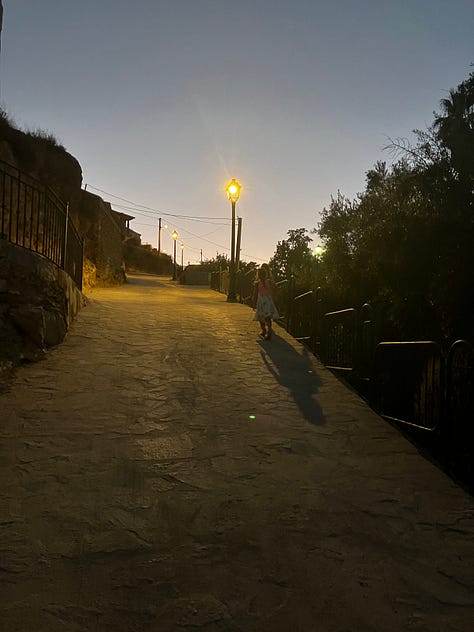
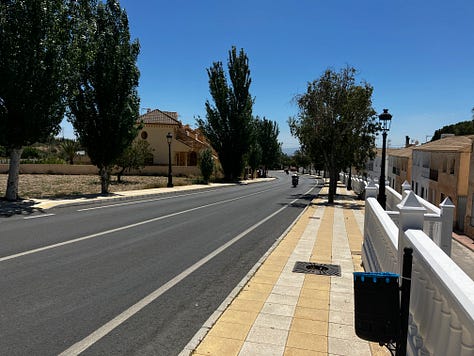
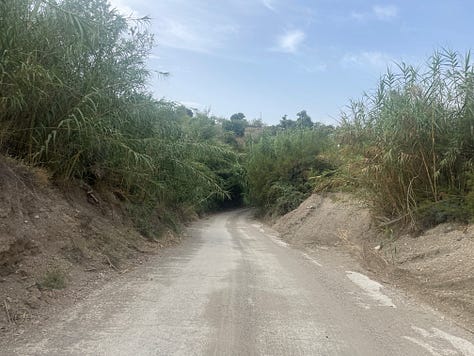
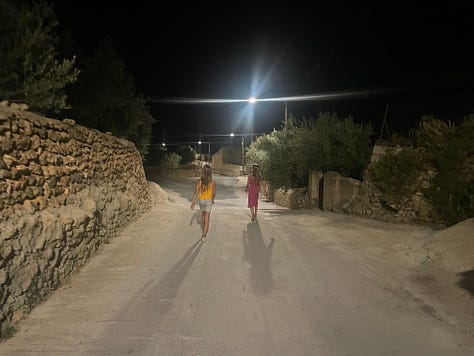
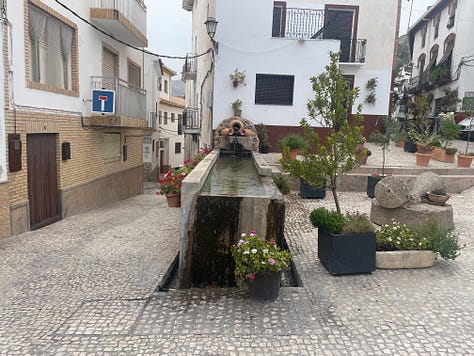
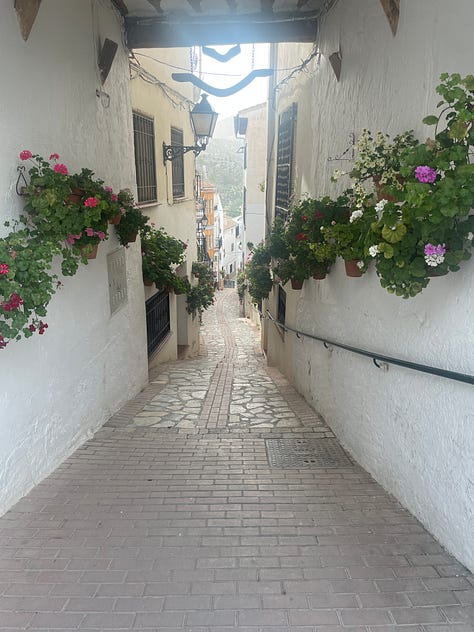
Our journey continued to Edinburgh, Scotland and this city had ample opportunities for comfortable walking, particularly in the tourist-friendly central areas. Princes Street, a wide boulevard, was primarily reserved for trams and buses, offering pedestrians a safe haven. Yet, one notable observation in the UK was the pedestrian's seemingly low priority when crossing roads, leading many to cross illegally due to a lack of convenient pedestrian signals and short walking phases.
Edinburgh's pedestrian-only streets around the train station showcased the city's commitment to pedestrian-friendly infrastructure. The UK is also experiencing a broader trend of developing low emissions zones (LEZ) in town centers to reduce vehicle demands and improve the pedestrian experience.
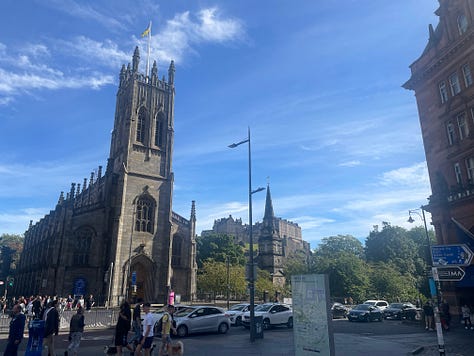
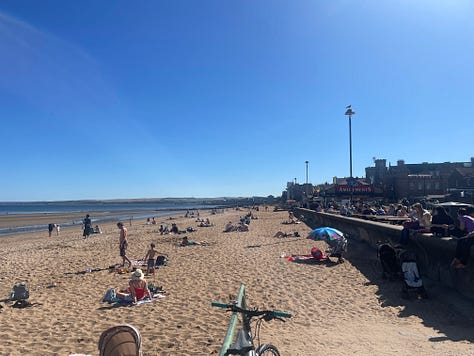
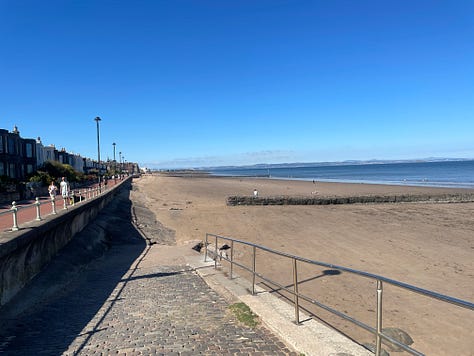
We are currently in York, England, a city that is nearly 2,000 years old. Its compact nature allowed us to explore the majority of the town easily. Encircled by mostly intact walls, York features narrow streets, some of which have been expanded over the years for tourism or to improve access.
Walking through York is a pleasure whenever you leave your door. You can enjoy a brisk walk within an hour to circumnavigate the walls and pop into the inner city at leisure through many gates (called bars) to experience shopping and many services. Fundamental amenities are similarly easy to access including several grocery stores, pet stores, home stores, etc. within a 15-minute walk. Or, if you’re feeling more ambitious, an hour's walk can also get you to either a nearby village or an expansive outlet mall. Vehicles are definitely optional in this city!
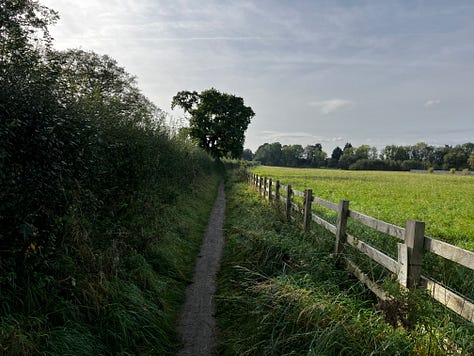
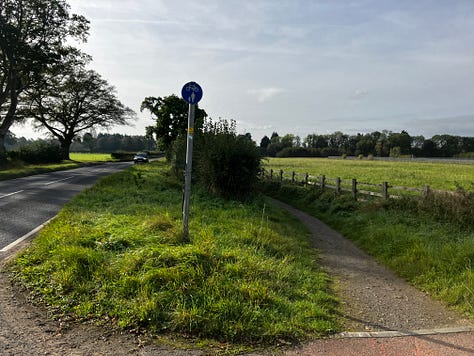
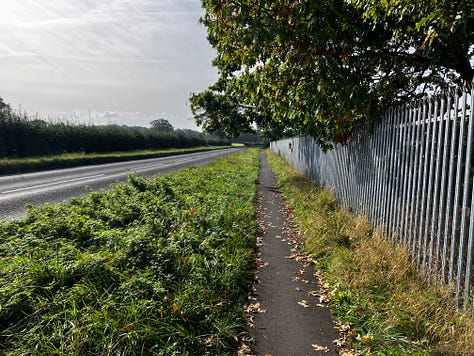
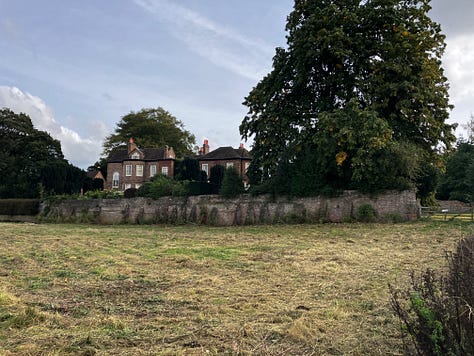
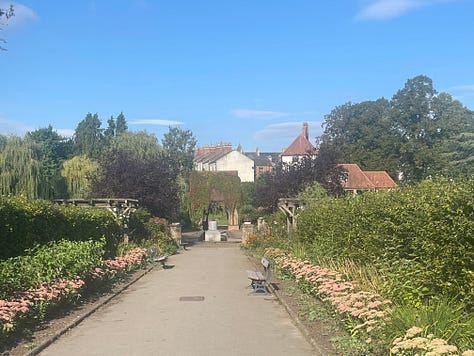
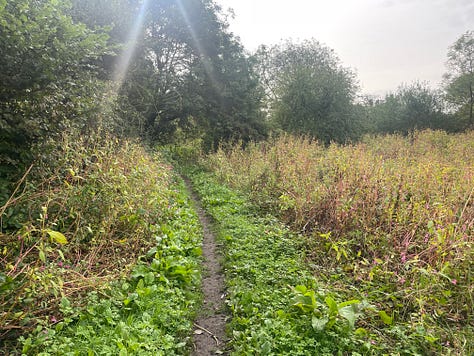
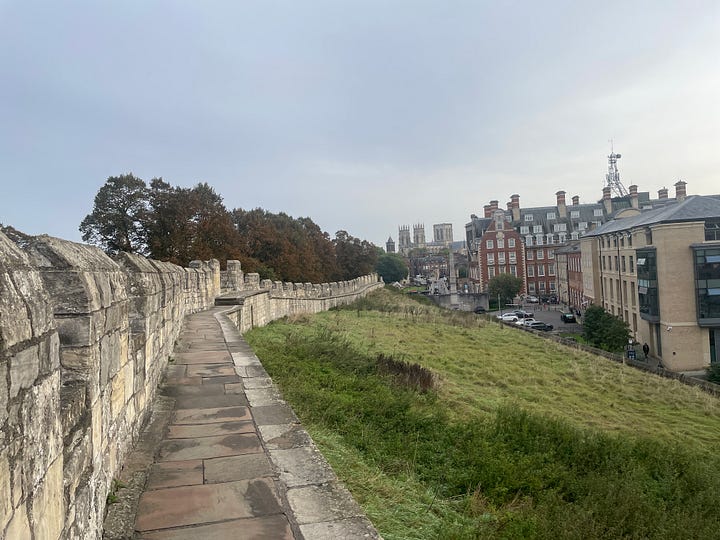
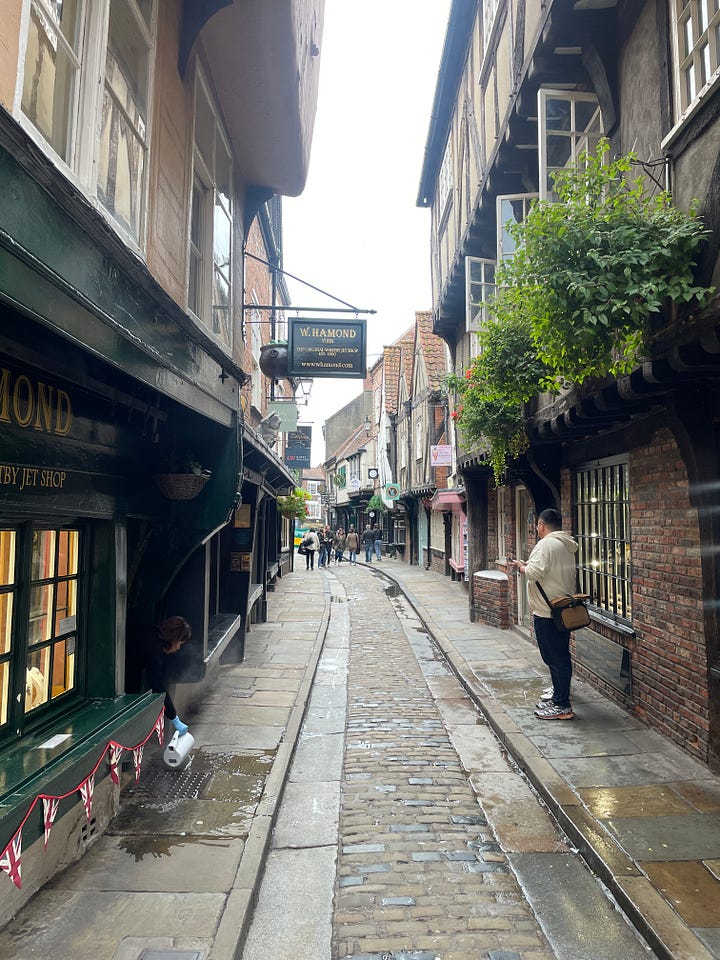
Contrasting Experiences
In comparing North America and Europe, it's clear that while North America offers enjoyable walking experiences in certain contexts, but Europe stands out for its compact, pedestrian-friendly design. North America's vast distances and urban sprawl often necessitate vehicle use for even simple tasks, while Europe's walkable towns and cities provide a diverse, engaging experience for pedestrians.
Despite my personal enjoyment of driving, it's evident that in cities such as Toronto, the stress associated with navigating massive freeways (e.g. Highway 401) and crammed corridors can diminish that enjoyment. This highlights the need to address walkability and urban planning challenges in North America. Improving the walkability of neighbourhoods, encouraging infill development, and prioritizing pedestrian safety should continue to be long-term goals.
While it is tempting to want these walkability improvements now, we must also remember that this will continue to be a generational challenge - street by street, neighbourhood by neighbourhood - we are already making progress as we move away from conventional practices more common over the past century. Professionals, including planners and engineers, have a crucial role to play in making life more enjoyable for residents and enhancing road safety, regardless of where they live.
What have your walkability experiences been like both at home and in your travels? What are we doing well and what could we do better?





